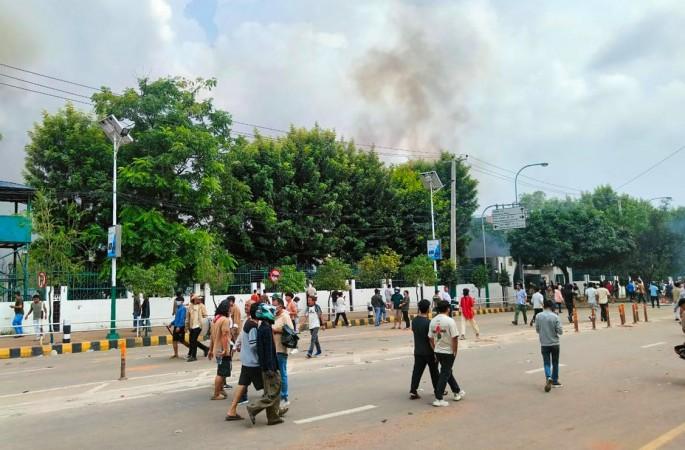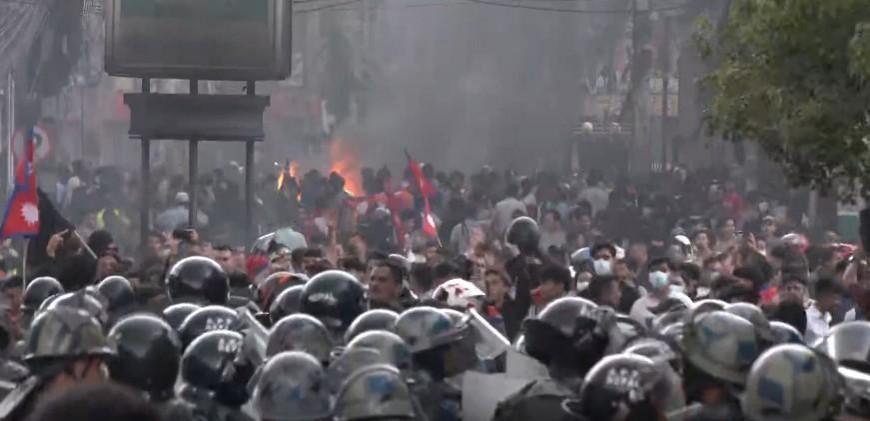
Nepal's political crisis of September 2025, catalyzed by a suddenly imposed social media ban, has exploded into a multi-dimensional crisis encompassing youth rebellion, institutional collapse, entrenched corruption, and intricate international intrigue. Beyond the surface narrative of youthful protest against suppression lies a labyrinth of secret intelligence reports, covert influence operations, regional strategic ambitions, and domestic elite power struggles. A mature, factually grounded and intelligence-led analysis reveals the deeper currents shaping Nepal's current convulsions and the critical challenges ahead for this Himalayan nation.
I. The Flashpoint and Underlying Pulse: Social Media Ban as Catalyst and Symbol
The Nepalese government's decision on September 4, 2025, to ban 26 social media platforms including Facebook, Instagram, WhatsApp, and YouTube marked more than an effort to regulate digital space. It severed vital communication lifelines for millions, particularly the urban youth and overseas migrant communities reliant on remittance networks and social cohesion channels. The decision's selective exemption of platforms like TikTok, whose regulatory compliance ties closely to Chinese interests, reverberated as a geopolitical signal in the crisis.
Though rescinded within days due to public backlash, the ban crystallized decades-old socio-economic grievances, income inequality, persistent youth unemployment exceeding 22%, and widespread perception of a "nepo kid" political class detached from grassroots realities. This synthesis of digital grievance and generational disenfranchisement ignited protests expanding soon after into sweeping anti-corruption mobilizations driven organically by a leaderless, digitally networked Gen Z.
II. Severe Institutional Breakdown and Violent Climax
Secret intelligence and eyewitness accounts reveal that the protests initially peaceful cultural demonstrations escalated rapidly following government security forces' aggressive crackdown involving tear gas, rubber bullets, and live ammunition. Resulting in at least 19 fatalities, hundreds of injuries including minors, and arrests in hospitals and sanctuaries, the situation spiraled beyond government control.
In the ensuing chaos, parliamentary and judiciary buildings, residences of top politicians across party lines, and the Kathmandu airport fell victim to arson and mob violence. The Prime Minister and multiple cabinet ministers resigned amid escalating disorder, leaving a power vacuum with unpredictable governance prospects.
Over 900 prisoners fleeing detention centers in western Nepal underscored the depth of institutional fragility and the erosion of state authority amid the crisis.

III. The Invisible Fronts: Intelligence and Covert Narratives
Declassified and leaked intelligence reports from regional and Western sources expose a complex overlay of covert operations and shadow diplomacy:
Chinese Interests: Beijing's urgent surveillance through diplomatic and cyber channels aimed at protecting Belt and Road Initiative assets and border security reflect strategic precaution, rather than overt intervention. Its tacit support for selective platform regulations manifested in the survival of Chinese-compliant apps during the ban.
Indian Intelligence Vigilance: Indian security agencies have issued multiple warnings about Pakistan's ISI expanding covert influence via religious institutions and communications infrastructure within Nepal, harvesting local discontent for proxy leverage. Recent busts of espionage cells, SIM fraud, and cross-border data manipulation illustrate active intelligence operations designed to deter fractures spilling into India's sensitive border regions.
U.S. Monitoring and Soft Power Influence: While Washington officially emphasizes support for democratic rights and opposes violent crackdowns, leaked analyses suggest that American NGOs and diplomatic programs have, unintentionally or indirectly, empowered mobilization tactics, heightening unease in Kathmandu about covert regime-change narratives amidst the wider US-China competition.
Pakistani Maneuvers: Classified assessments trace ISI efforts to exploit Nepal's fragmentation by nurturing vulnerable ethnic and religious networks as a counterbalance in South Asia's regional power chess, complicating local allegiances and intensifying proxy conflicts.
IV. Organic Rebellion and Manipulation Nexus
Despite allegations of external orchestration voiced by official circles, grassroots reporting, social media analytics, and protester testimonies affirm the primarily indigenous, spontaneous nature of the uprising. The movement's decentralization and aversion to traditional party politics distinguish it as a genuine societal rupture rather than a scripted coup.
Yet, the vacuum of leadership and elite factionalism has allowed political groups and foreign actors to harness the instability for transactional gain, emblematic of the thin line between popular protest and geopolitical contest.
V. Socio-Economic and Political Prognosis Under Intelligence Lens
Intelligence sources concur that without immediate reform addressing youth disenfranchisement, corruption, and institutional rebuilding, Nepal risks protracted instability or sliding into chronic proxy warfare reflective of broader South Asian and Indo-Pacific strategic rivalries. Social media's enduring symbolic and practical role in cementing new political identities further complicates governance and security approaches.
The military's enhanced role in restoring order introduces a delicate balance between authoritarian regression and stabilization that foreign intelligence agencies keenly observe as a bellwether for Nepal's democratic trajectory.
VI. Navigating The Himalayan Inflection
The Nepal 2025 crisis is emblematic of a critical junction for many emerging democracies: an intersection where youthful digital dissent, systemic governance failure, and global strategic rivalry entangle unpredictably. Only by harnessing the authenticity of youth movements, unravelling opaque elite corruption, and strategically mitigating external covert pressures can Nepal aspire to durable political renewal.
That renewal demands intelligence-aware policymaking that neither dismisses the grassroots demands as mere external subversion nor surrenders national sovereignty to foreign proxies. The Himalayan nation's future hangs in the balance, one that will echo far beyond its borders in shaping the future architecture of South Asian geopolitics and democratic resilience.
[Major General Dr. Dilawar Singh, IAV, is a distinguished strategist having held senior positions in technology, defence, and corporate governance. He serves on global boards and advises on leadership, emerging technologies, and strategic affairs, with a focus on aligning India's interests in the evolving global technological order.]

















